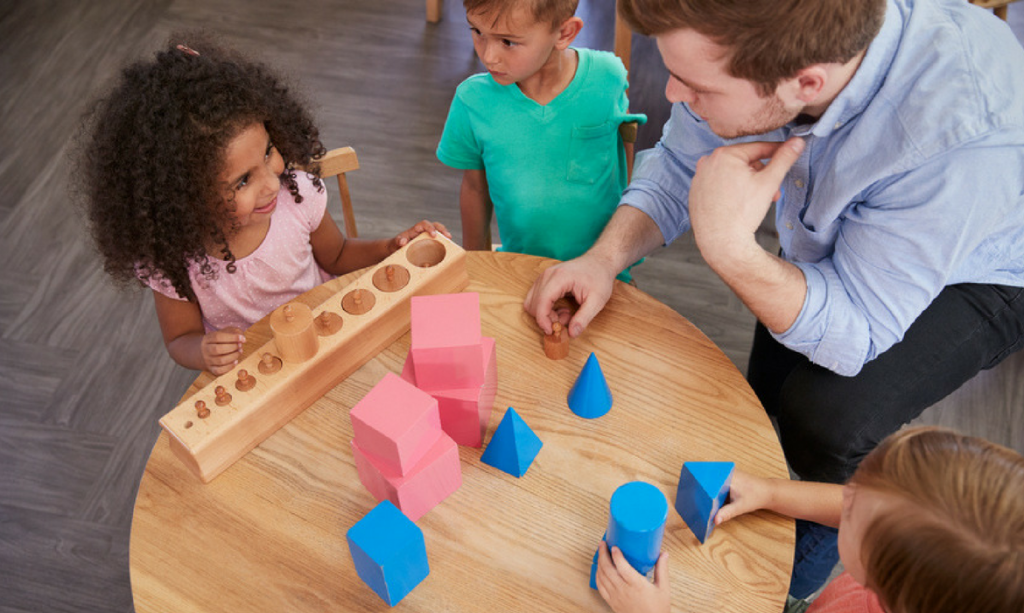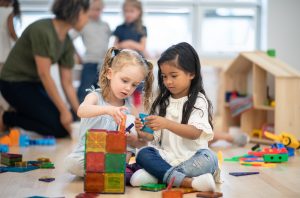Ever wonder how we make decisions? Learn a second language (or our first)? Navigate a preschool classroom? Learn which colors combine to make others?
Data. Really. Data.
We might think of data as graphs and charts and large collections of information, but actually life itselfis a sort of data-gathering endeavor. At its simplest level, data is the information we collect—knowingly or otherwise—about the world around us. How can teachers make this natural ability more explicit and thus more useful to children?
Children’s Developing Data Collection
Even before birth our brains collect and organize information constantly. In the womb, babies store information on the prosody of their mother’s voice (intonation, rhythm, and stress). Then, as newborns, they differentiate and prefer her voice to another female’s.
Babies and children are constantly taking in data about the world around them. They make use of this data—often unconsciously—in a wide variety of ways. They learn which objects not to touch (if the object is steaming, came from an oven, or has been sitting in the sun), and what activities require them to hang on (playing on a merry-go-round or swingset).
Consider language development. Young children learn, through repeated exposure, that plural nouns usually end in the sound /s/. We know this because they then generalize this rule and turn footinto foots, mouseinto mouses, and sheepinto sheeps. Eventually, through repeated exposure to feet, mice, and sheep, they collect data to know that there are exceptions to the /s/ rule.
Through play, toddlers and preschoolers learn that rotating shape sorter pieces frequently results in a better fit into the sorter. They discover that mixing blue and yellow paint results in green paint, and if they keep adding many colors they end up with brown paint.
Understanding Data Collection in the Preschool Classroom
Perceiving the world around them and sorting through incoming information might be an innate ability for children, but generally they are not aware of the process. Teachers have the important job of assisting children in recognizing the powerful data collection and management tools at their disposal. When creating classroom activities, it’s good to keep in mind just how integral data gathering is to a preschooler’s development and learning.
What are the important concepts involved in data collection and data use in the preschool classroom, and how can teachers support the mathematics of data? What Children Know and Need to Know about Datadescribes the underlying concepts that children need to grasp in order to make use of the data they collect, to understand the questions they are trying to answer, to represent the data, and, finally, to interpret it. Below are brief descriptions of the process, but refer to the document for greater detail.
Identifying Variation, Classifying, and Sorting
Ultimately, data needs to be organized, classified, and sorted in order to be useful. Children are already engaged in this activity at an early age. Paying attention to how children sort objects, asking them to sort in a different way, and prompting them to describe how they sorted are ways that teachers can support the development of these key skills.
Understanding the Question
Sounds simple, right? Yet understanding the question is critical to deciding what information to collect. Imagine an example that has to do with children’s curiosity about local parks. Do we want to know how many parks are in the neighborhood or city? How many children go to parks? How many different parks do they go to? The children’s most popular parks? All of these require different types of information (although all about parks).
Use questioning to help children think about what they want to find out. Very importantly, always pose questions that are relevant to children in their own contexts and that connect with their everyday lives.
Gathering, Representing, and Interpreting the Data
Once children have a question to explore, they can come up with ways to gather the data. But just collecting the data doesn’t give an immediate answer to a question. Children need to organize, represent, and interpret the data. For the examples above, consider these techniques.
- Have children name parks they know in order to generate a list for the neighborhood or city. Other data-gathering techniques, such as consulting maps, brochures or websites, might provide a more complete list.
- Ask children to raise their hands if they go to parks, then ask children to raise their hands if they don’t go to parks. Tally or write both numbers on the board and compare. A pie chart could illustrate the outcome as well.
- Read the list of parks and ask children to raise their hands for the parks they have visited. Use a bar graph to represent the number of children who raised their hands for each park.
- Ask children to vote for their favorite park. Use a bar chart to represent the number of children who voted for each park. Compare the lengths of the bars to decide the most popular park (or maybe even more than one).
- After all the data has been gathered and represented, ask children if the information answers the question. What did they learn? Would it help to organize the data in a different way?
Thinking about these formal types of data use can seem intimidating unless we remember that children are developing these skills even before birth. We are building on an existing and very sophisticated ability. Data activities in the preschool classroom engage children’s deliberate use of tools at their disposal and prepare them to tackle increasingly complex data-related endeavors in school and life.
This article is adapted from resources in the Measurement and Data module of DREME TE, our website of free resources for teacher educators. For more about the important mathematical concepts involved in data gathering and use, see The Mathematics of Data. For information on formative assessment of children’s knowledge of data and its uses, visit Formative Assessment: Data.



